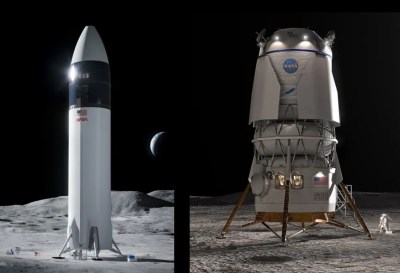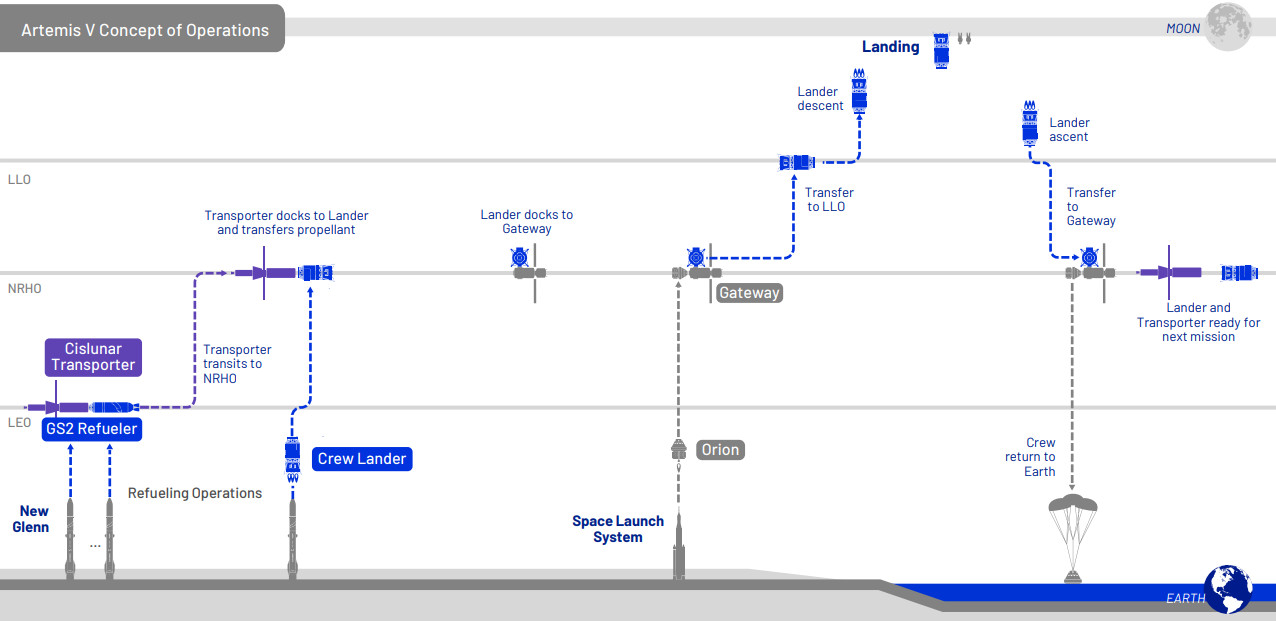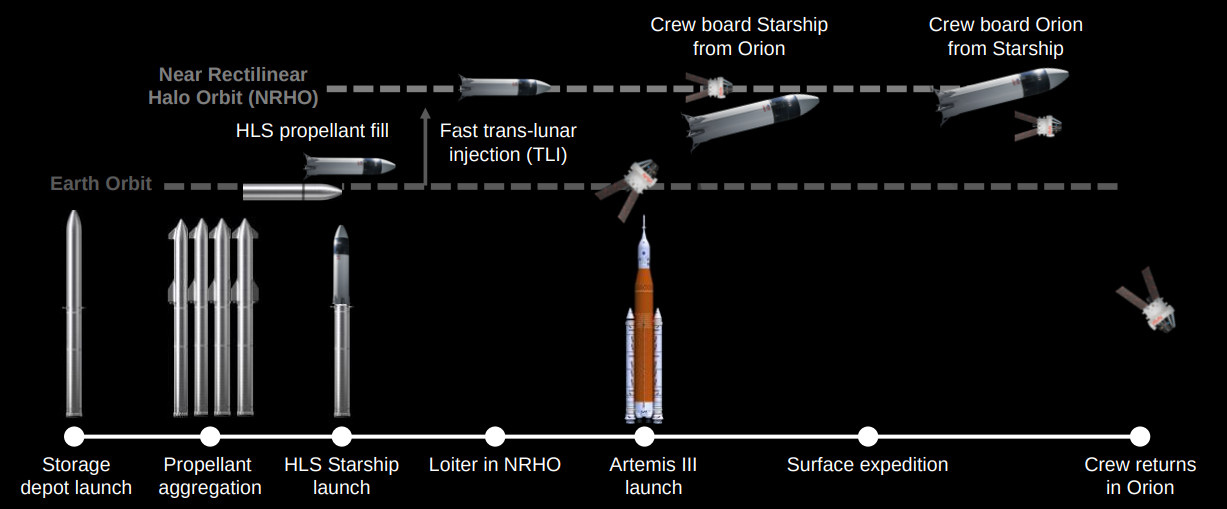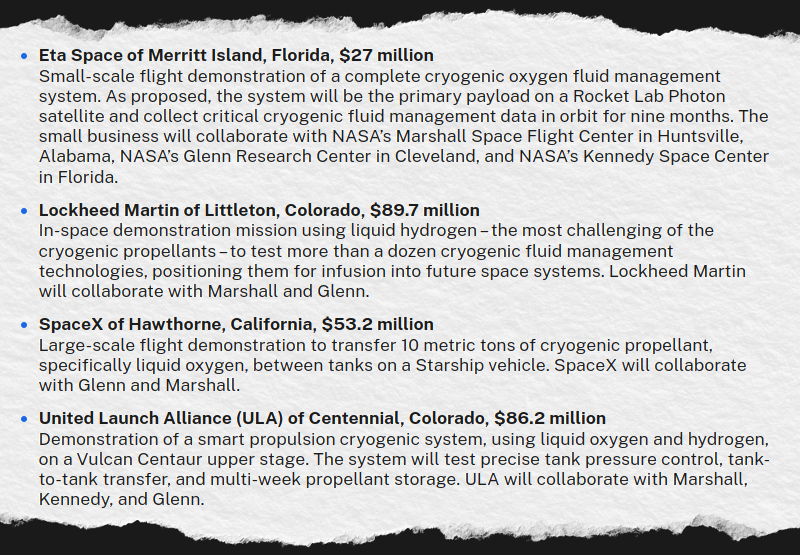

Artemis’ Next Giant Leap: Orbital Refueling
source link: https://hackaday.com/2023/12/07/artemis-next-giant-leap-orbital-refueling/
Go to the source link to view the article. You can view the picture content, updated content and better typesetting reading experience. If the link is broken, please click the button below to view the snapshot at that time.
Artemis’ Next Giant Leap: Orbital Refueling

By the end of the decade, NASA’s Artemis program hopes to have placed boots back on the Moon for the first time since 1972. But not for the quick sightseeing jaunts of the Apollo era — the space agency wants to send regular missions made up of international crews down to the lunar surface, where they’ll eventually have permanent living and working facilities.
The goal is to turn the Moon into a scientific outpost, and that requires a payload delivery infrastructure far more capable than the Apollo Lunar Module (LM). NASA asked their commercial partners to design crewed lunar landers that could deliver tens of tons of to the lunar surface, with SpaceX and Blue Origin ultimately being awarded contracts to build and demonstrate their vehicles over the next several years.
Starship and Blue Moon, note scale of astronauts
At a glance, the two landers would appear to have very little in common. The SpaceX Starship is a sleek, towering rocket that looks like something from a 1950s science fiction film; while the Blue Moon lander utilizes a more conventional design that’s reminiscent of a modernized Apollo LM. The dichotomy is intentional. NASA believes there’s a built-in level of operational redundancy provided by the companies using two very different approaches to solve the same goal. Should one of the landers be delayed or found deficient in some way, the other company’s parallel work would be unaffected.
But despite their differences, both landers do utilize one common technology, and it’s a pretty big one. So big, in fact, that neither lander will be able to touch the Moon until it can be perfected. What’s worse is that, to date, it’s an almost entirely unproven technology that’s never been demonstrated at anywhere near the scale required.
Running on Empty
Logically, the larger a payload you want to put into orbit (or beyond), the larger a rocket you need. Of course, there are limits on what we can do in terms of material science, engine technology, and even economics. So you can quickly get to the point where a rocket simply becomes too large to be practical. Once you hit that point, you need to start looking at other ways of getting your target mass into orbit. For projects like the International Space Station, that meant breaking the structure up into smaller modules that could be launched individually and assembled in orbit.
Both SpaceX and Blue Origin have essentially the same problem: their landers, when you include the propellant they’ll need to land on the Moon and lift back off again, are simply too heavy to launch. Both companies are developing heavyweight boosters to get their respective landers out of Earth’s gravity well and into low Earth orbit, but that’s the best they can do. So how will they get astronauts to the Moon?
While the techniques differ slightly, both companies will need to load their landers with the propellants necessary to complete the missions while they are already in space. And in both cases, the lander’s human crew wouldn’t launch from Earth until their ride to the lunar surface is fueled up and waiting for them.
Blue Moon
According to the current plan, a single New Glenn rocket will be able to lift the Blue Moon lander off from Earth and send it to the Lunar Gateway Station. But once there, the lander won’t have enough propellant to make a powered descent to the lunar surface, much less take back off again.
So once the lander has reached the Lunar Gateway, two more New Glenn rockets will be launched. One will carry a propulsion and navigation module, and the other a propellant storage module. Once in orbit, they will connect to each other to become what Blue Origin is calling the Cislunar Transporter.
At this point, additional New Glenn rockets will be launched, each carrying propellants to be loaded into the Cislunar Transporter. When the Transporter has been filled, it will make its way to the Lunar Gateway, where it can rendezvous with the lander and refuel it. The number of launches required to fill the Cislunar Transporter isn’t publicly known, and it’s entirely possible that even Blue Origin won’t know the exact number until the hardware is more mature.
Starship
Starship is unique in that it actually makes up the upper stage of its booster rocket, the Superheavy. So to reach Earth orbit, Starship will need to expend the vast majority of the propellants it was loaded with on Earth. Once in a stable orbit, the spacecraft will have enough propellant to maneuver, but nowhere near enough to make the journey to the Moon.
To refuel the Moon bound Starship, SpaceX will launch several “tanker” versions of the spacecraft. These tanker craft will be stripped down to the bare essentials to save mass when compared to the lander version, which means they’ll be able to carry more propellants within the same volume. Each reusable tanker will dock with the lander, and transfer over as much propellant as it can while still leaving enough onboard to complete its own landing back on Earth.
In some versions of the plan, these tankers will actually transfer their propellants into a third “Depot” variant of the Starship before the lander itself is launched. While the addition of a third Starship variant would make this approach slightly more expensive and complex, the advantage is that the lander could remain on the ground until the Depot is filled, making the refueling process more resilient against any delays that might arise while launching the tankers.
Just like with the Blue Moon lander, it’s currently unknown how many launches will be required to fully fuel the lander, but estimates put the number somewhere between 10 and 20. The only way this refueling process will be economically viable, or even practical, is if the tankers and Superheavy boosters that launch them can be quickly and affordably reflown.
Highly Motivated Development
Despite the fact that both Blue Origin and SpaceX have hung the success of their respective lunar landers on the ability to quickly and safely refuel them while in orbit, there’s simply no precedent for such an operation. Studies so far have focused on refueling small satellites, using relatively simple monopropellants like hydrazine. But topping off the tanks on Starship or Blue Moon will mean autonomously moving hundreds of tons of cryogenic liquid oxygen, methane, and hydrogen between spacecraft. The couplings, pumps, piping, valves, and insulation required to facilitate that sort of propellant transfer have never been tested in space and could take many iterations to perfect.
If Artemis is going to return astronauts to the Moon, this is a problem that needs to be solved quickly. For their part, NASA’s Space Technology Mission Directorate awarded several contracts in 2020 designed to study various aspects of orbital propellant transfer. SpaceX specifically was guaranteed $53.2 million if they can demonstrate moving 10 metric tons of liquid oxygen between two tanks onboard an in-flight Starship. While nowhere near as complex as moving liquids between two vehicles, this early test should still provide some critical data, and give SpaceX the chance to test some of the hardware involved.
In a recent presentation detailing the progress of the Artemis program, it was revealed that SpaceX may attempt the propellant transfer demonstration during Starship’s next test flight, though a NASA official later clarified that “no final decisions on timing have been made.” It may be that SpaceX wants to get a full orbital demonstration flight under their belt before moving on to the propellant test, but the clock is ticking. If they can’t demonstrate propellant transfer in 2024, the already fragile Artemis timeline will almost certainly fall apart.
Put simply, there’s no returning to the Moon in the near future without in-orbit propellant transfers. But with billions of dollars in Artemis contracts on the line, both SpaceX and Blue Origin will be highly motivated to overcome this technical hurdle as soon as they can.
Recommend
-
 4
4
Orbital refueling and manufacturing go from theory to reality in 2021Orbital refueling and manufacturing go from theory to reality in 2021Devin Coldewey
-
 3
3
Feb 5, 2021 — 00:46 CST The M1 Mac mini and MacBook Air: A Giant Leap Forward for All Mac Users
-
 4
4
One Giant Leap for Waferscale AI Remember how, a few years ago, the chatter was that waferscale systems wouldn’t stand a chance? The expense, complexity, software stack required, and litany of other barriers went on. Yet Cerebras Sy...
-
 7
7
One small new battery, one giant leap for our energy future ...
-
 2
2
Satellite TankerTuesday by Victor TangermannStartup Launches Refueling Station Into Orbit, Gets $10 Million in FundingThis could be the answer t...
-
 4
4
One giant leap for the mini cheetah63,957 viewsOct 20, 20211.9K33ShareSave
-
 8
8
One small patch for GDB, one giant leap for reversers! One thing that really bothered me for a long time while debugging is the need to calculate the libraries loaded addresses versus the addresses at disk if you want to follow and co...
-
 2
2
One Giant Leap (Backwards) For Humankind: What The Russia-Ukraine War Means For The ISS The International Space Station was built not only in the name of science and exploration, but as a symbol of unity. Five spac...
-
 2
2
News » Advice » Giant Leap’s Small Steps: The power of maps,...
-
 8
8
An innovative, efficient hydrogen compressor for FCEV refueling stations by
About Joyk
Aggregate valuable and interesting links.
Joyk means Joy of geeK



